Read Reviews
The Best Pressure Washers
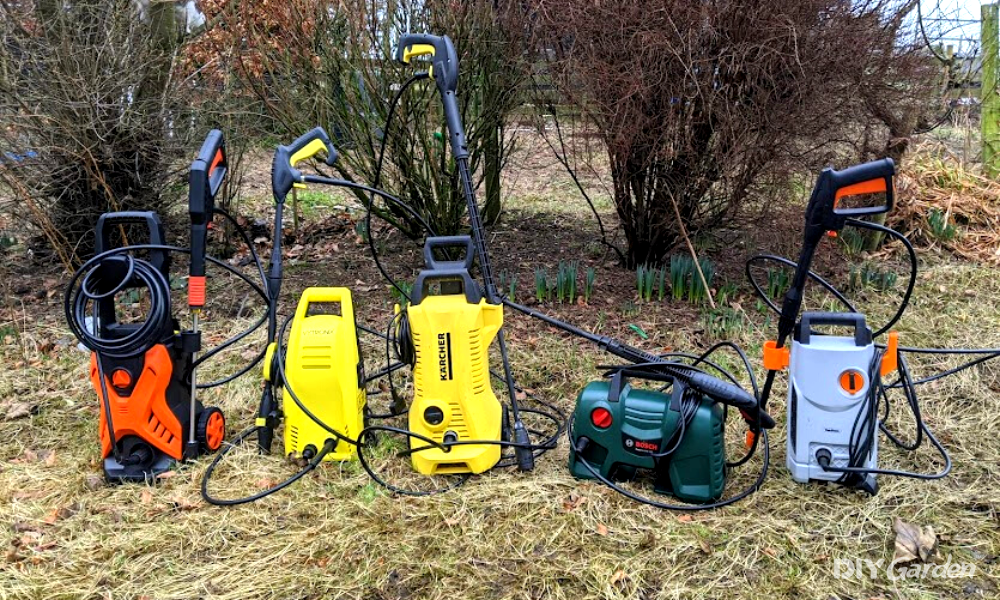
The Kärcher K5 Pressure Washer holds the top spot in our list of the UK’s best home pressure washers. We’ve extensively tested it, and it has the great combination of being easy to use, yet powerful. It’s versatility will also benefit a wide range of users, being able to clean stubborn dirty patios, yet gentle enough to use on your car. It’s a high-end piece of kit, so bear in mind it’s quite pricey. If you’re looking for a cheaper alternative that still performs well, our testing shows the Kärcher K2 is the best value model to go for.
-
Best home pressure washer - Kärcher K5 Premium Full Control Plus Home Pressure Washer
-
Best value Kärcher model - Kärcher K2 Power Control High-Pressure Washer
-
Best budget pressure washer - Bosch EasyAquatak 120 Pressure Washer
-
Best pro pressure washer - Kärcher K7 Premium Full Control Plus Home Pressure Washer
-
Best water pressure - Wilks-USA RX550i Electric Pressure Washer
-
Best for small patios & decking - VonHaus Home Pressure Washer
Pressure Washer Reviews
2. Kärcher K2 Power Control High-Pressure Washer[ SAVE 6% ]
Best value Kärcher model
- The Kärcher K2 is very easy to assemble - you'll be up and running in about 5 minutes
- The water pressure options are great for a variety of cleaning tasks
- There's a wide array of Kärcher accessories which you can add on, making it extremely versatile
- It's not too noisy, so won't disturb your neighbours too much!
- It's easy to move around, and easy to use
- You'll possibly need to use it with an extension lead, as the cable is only 5m long
- For more heavy duty, industrial cleaning jobs, you'll probably want one of the more powerful options on this page
- Water Pressure
- 110 bar
- Flow Rate
- 360 l/h
- Motor Power
- 1400 W
- Hose Length
- 5m
- Weight
- 3.99kg
- Design
- 5
- Power
- 4
- Ease of Use
- 5
- Versatility
- 4
- Value for Money
- 5
If you’re a fan of Kärcher pressure washers, but don’t want to spend a lot of money, the Kärcher K2 Power Control High-Pressure Washer is certainly worth considering. It’s a model we know very well, having extensively tested it over the last few years.
What I find most impressive is it’s versatility. If your patio or paving needs a deep clean, the 110 bar jet is powerful enough to lift dirt, algae and black spots. But if you also want give your car a quick hosing down, the softer 20 bar spray will do the trick without the worry of damaging your paintwork.
Design-wise it’s compact, easy to move around and not too noisy. Plus the iconic Kärcher branding makes you feel that you’re using a reliable piece of kit that will last many years.
When you combine its ability to clean with the attractive price-point, it’s easy to see why the K2 is such a popular budget model for UK households. For the majority of our readers, this model would make a great choice.
Did you find this review helpful?
3. Bosch EasyAquatak 120 Pressure Washer
Best budget pressure washer
- Variable nozzle makes it quick to change between settings without detaching/reattaching anything
- Very lightweight pressure washer at 4 kg - easy to move around/lift/carry
- Because of compact design with no wheels, can be stored on a shelf
- Powerful enough to clean grime and algae from walls and wash car
- Metal connectors on the hose are generally considered more durable than plastic ones
- The mains lead may be a little short in some situations - some users recommend purchasing the extension hose or using with extension cable.
- The hose doesn't store very easily on the unit.
- The instructions are not very informative and can leave a few things open to interpretation.
- Requires additional purchase of Bosch self priming kit to be able to use non-tap water source.
- Water Pressure
- 120 bars
- Flow Rate
- 300 l/h
- Motor Power
- 1500W
- Hose Length
- 5m
- Weight
- 4kg
- Design
- 4.5
- Power
- 4
- Ease of Use
- 4
- Versatility
- 4.5
- Value for Money
- 4.7
The Bosch EasyAquatak 120 is powerful yet compact, owning a niche in the market as a very lightweight pressure washer.
Weighing just 4 kg, it would be easy to not expect much from this little machine; however, Bosch have in fact created a small pressure washer that can still dish out 120 bars of pressure and clean for hours.
With many pressure washers it can be very time consuming and annoying to have to keep moving the heavy base unit around whilst in the middle of a task. Yet, with the Easy Aquatak 120 this isn’t such a problem;. I’d say it’s the best pressure washer in terms of portability due to its light weight. It’s even possible to be useful as a handheld pressure washer – you can even carry it with you as you go.
The only thing that slightly hinders this is the relatively short mains cable. Using an extension lead or buying a hose extension can provide a bit more flexibility.
The design of this unit is a bit different. It’s made with a low centre of gravity so it looks pretty quirky, but this design stops it toppling over. This pressure washer features a wide base that means you can tug it and it won’t fall down like the majority of washers. You can even set this Bosch pressure washer on a table, or store it on a shelf, and it won’t fall off easily.
In general, the Aquatak 120 pressure washer is pretty powerful, capable of clearing moss and algae from walls and cleaning cars. It might not have the super patio cleaning strength of some other models, but it will do a good job to tackle the majority of grime.
This pressure washer can draw water from either a garden hose or an unpressurised source (bucket, water bottle, etc.), but you do need to buy a separate ‘Bosch self-priming kit’ to use the latter function.
When it comes to accessories, the pressure washer comes with several useful nozzles. There is a fixed fan jet nozzle for basic cleaning, a rotary nozzle for dirt in hard-to-reach places, and a high-pressure detergent nozzle to blast away built-up grime. All the accessories store on the pressure washer itself. Having all the accessories easily to hand is a real time saver, and they simply click in and out of place when required.
Due to its weight, this is the best pressure washer if you want a light, easy-to-use model. It provides a decent amount of cleaning power for cleaning cars and patios, it just doesn’t quite have the strength to ‘write in the dirt’ like some models.
Did you find this review helpful?
5. Wilks-USA RX550i Electric Pressure Washer
Best water pressure
- Pressure washer unit feels very robust and has metal fittings, not plastic
- Comes with two hoses - the pressure is still maintained through the extra long one and unit doesn't have to be moved as much
- The wheels help to move the unit around on flat surfaces
- For this price paid it has a good amount of 'extras' included
- Powerful enough to remove moss, algae, and stains from patio
- The included instructions are rather brief and could be clearer
- The hose supplied is quite stiff and can be prone to kinking
- The patio cleaner attachment isn't strong enough to tackle a really grimy patio
- A lot heavier than most pressure washers and is challenging to lift/carry
- Not as powerful as the Kärcher K7 pressure washer (for some people, this might be a positive)
- Water Pressure
- 262 bars
- Flow Rate
- 510 l/h
- Motor Power
- 3000W
- Hose Length
- 26m
- Weight
- 30kg
- Design
- 4.3
- Power
- 4.4
- Ease of Use
- 4.3
- Versatility
- 4.6
- Value for Money
- 4
For a powerful pressure washer at a reasonable price, the Wilks-USA RX550i Electric Pressure Washer is one of the best pressure washers to consider. It’s up there with the most powerful washers, yet doesn’t cost quite as much.
Offering 155 bars of continuous pressure, it isn’t quite as strong as the Kärcher K7 pressure washer (which works at 160 bars), but it comes pretty close. For this reason it’s well suited to domestic use.
This Wilks-USA pressure washer can also achieve a maximum pressure of 262 bar with its first burst of water, which is extremely powerful. However, it isn’t capable of producing this level of pressure continuously, so it’s more realistic to call it a 155-bar pressure washer.
There are also several accessories included – certainly more than come with most machines – which helps it achieve the accolade of best value pressure washer. The accessories include: brush-head attachments, various nozzles, and an additional extra-long 26 m hose. The extra hose is easy to attach to the pressure washer when the standard 8 m hose isn’t long enough, meaning tasks can be completed without even having to move the pressure washer unit.
A noticeable downside of the Wilks-USA RX550i pressure washer is its weight. Weighing 30 kg, it’s not very practical to move around. This weight makes the included extra-long hose seem more of a necessity than a bonus – to be used instead of moving the pressure washer itself. Fortunately, it does have wheels, so over a flat surface it can be rolled fairly easily.
By using the different nozzles, jets and lances, this pressure washer can clean gutters and cars, and even strip moss, algae and grime from paving slabs. In fact, the finest jet is so powerful that it can visibly ‘write’ on grubby driveways.
However, the included patio cleaner attachment is not particularly efficient. If you’ve got heavy stains to remove, you’ll be better off using some of the included nozzles instead.
There is also an on-board detergent tank for mixing in the solution whilst you’re spraying, and all of the accessories store neatly on the pressure washer too. This includes the hose, which can be wound onto the washer as well.
Did you find this review helpful?
6. VonHaus Home Pressure Washer
Best for small patios & decking
- Powerful enough to remove mould and stains from paving
- Can be used to clean bikes, cars and motorcycles without causing damage
- The mains cable is long enough that you likely won't need an extension to clean the patio
- Adjustable nozzle allows you to adjust width of spray whilst you work
- The detergent bottle empties quite quickly so should be diluted to avoid wasting product
- Storage isn't that neat as there isn't place to store accessories on the unit itself
- The snow foam lance is not very efficient for cleaning the car and is not adjustable
- Can make quite a lot of noise, especially when releasing trigger, so you may not want to use it early morning/evening
- Water Pressure
- 90 bar
- Flow Rate
- 330 l/h
- Motor Power
- 1600W
- Hose Length
- 5m
- Weight
- 5.8kg
- Design
- 4
- Power
- 3.5
- Ease of Use
- 4
- Versatility
- 4
- Value for Money
- 4
For a compact pressure washer that is budget friendly, yet still capable of lifting dirt from the patio, the VonHaus Home Pressure Washer is a great option to consider. It has a flow rate of 330 L/h and 90 bar pressure.
It works at 1600 W which helps get cleaning done quickly, despite having the lowest bar pressure featured here. The adjustable spray nozzle also assists cleaning, allowing you to easily change from a concentrated jet to wider spray, depending on the task at hand.
Including a 5 m hose and 5 m power cable, this pressure washer permits a reasonable reach, although it’s not as flexible as some. For a small patio, or standard driveway, this is one of the best pressure washers on the market.
If you do need to pick this pressure washer up, it only weighs 6.8 kg so is easy to move without difficulty. It also has a secure carry handle, so you can even carry the pressure washer around with you as you work, if you prefer.
Whilst not the most powerful machine, this budget pressure washer still works well to spruce up the patio, clean decking, and hose down garden furniture. It will also do a good job cleaning the car, but you may wish to apply detergent directly to the surface first. Although this VonHaus pressure washer has a detergent tank, it’s quite a thirsty machine; it uses up the detergent mix quickly when the soap is connected to the lance.
Given that this is a budget option, there aren’t as many ‘thoughtful touches’ on this machine as with more premium pressure washers. For example, it isn’t possible to store the accessories on board, and the mains cable doesn’t always store perfectly neatly over the plastic hook.
Yet, even so, the VonHaus pressure washer offers good value, keeping things simple whilst providing enough power to be a decent pressure washer. In my opinion, it’s the best pressure washer for small patios and gardens, and a great budget pressure washer too.
Did you find this review helpful?
Product Testers
We tested various vastly different pressure washer models in terms of their design, power, ease of use, versatility and value for money. We also assessed each model’s portability and extra features as additional tests. Here’s how we tested these key aspects of each pressure washer:
- Design: As design is such a fundamental element of a pressure washer’s usefulness, we tested the durability of the models’ overall designs as well as the materials each part was made from. Models that felt sturdy and stable and were made from high-quality materials were ranked higher than those that felt flimsy. Hoses reinforced with steel and metal fittings, for example, were rated highly for their durability.
- Power: The average home user needs a pressure washer with around 120 – 135+ bar pressure (or 1,800 – 2,000 PSI). So, if models performed below this, they were given a lower rating. We also tested the power settings and deemed models with a wider variety of settings more suitable for performing an array of tasks, such as washing your car (around 20 bar pressure) and cleaning tricky grime (150+ bar pressure).
- Ease of Use: The first test was to identify whether the model was already assembled and, if it wasn’t, how long it took to assemble and the ease of this. As most models come partially assembled, we deemed assembly times longer than 10 minutes too long. Hose lengths of at least 10 metres were rated as easier to use, as this length is suitable for a range of garden sizes and garden jobs. Cables of less than 5 metres were marked down, as they may require an extension cable to use, particularly in medium or large-sized gardens.
- Versatility: When testing the versatility of the pressure washers, we checked the attachments that came with them. The main attachments that the average user requires are a fan jet nozzle, a high-pressure detergent nozzle, and a rotary nozzle for tricky spots. If models didn’t have these attachments, they were ranked down in terms of versatility. Some models didn’t come with additional attachments, but these were available at an additional cost, which we also factored into our ranking.
- Value for Money: Our tests regarding value for money consisted of checking whether the quality of the materials the models were made from and the range of settings, attachments, and extra features matched up with the price point. If, when we tested, we noticed that a model wasn’t affordable for the average user or its features didn’t match up with its price, this was rated down.
- Portability: As we often have to move pressure washers from place to place, we tested the portability and weight of each model. Models below 10 kg were rated as particularly portable. Any model exceeding 15 kg was considered too heavy for the average user to easily move around. If a model was on the heavier side, we looked for other features to improve portability, like wheels or good-quality handles.
- Extra Features: Some models had extra features, such as an easy-to-use detergent system and a boost function. We were particularly impressed with these, as the features not only improved the versatility of the pressure washers but also their ease of use. As a result, they were marked higher than those with just bog-standard features.
Compare Product Features
Use the dropdown to sort the table by the feature you want to see.
Kärcher K5 Premium Full Control Plus Home Pressure Washer
- 5
- 145 bars
- 500 l/h
- 2100W
- 8m
- 13.6kg
Kärcher K2 Power Control High-Pressure Washer
- 4.6
- 110 bar
- 360 l/h
- 1400 W
- 5m
- 3.99kg
Bosch EasyAquatak 120 Pressure Washer
- 4.3
- 120 bars
- 300 l/h
- 1500W
- 5m
- 4kg
Kärcher K7 Premium Full Control Plus Home Pressure Washer
- 4.6
- 180 bars
- 550 l/h
- 2800W
- 10m
- 17.7kg
Wilks-USA RX550i Electric Pressure Washer
- 4.3
- 262 bars
- 510 l/h
- 3000W
- 26m
- 30kg
VonHaus Home Pressure Washer
- 3.9
- 90 bar
- 330 l/h
- 1600W
- 5m
- 5.8kg
Key Features to Consider When Choosing a Pressure Washer
When selecting a pressure washer, it’s crucial to consider key features that contribute to its overall performance and ease of use. Some of the most important aspects to consider include:
- Pressure output
- Water flow rate
- Hose length
- Available accessories
In the following paragraphs, we’ll dive deeper into each of these factors to help you make an informed decision when choosing the best pressure washer for your needs.
Pressure Output and Water Flow Rate
Pressure output, measured in PSI, and water flow rate, measured in L/hr, are critical factors in determining the cleaning power of a pressure washer.
Ideally, an electric washer should have a pressure range between 1,800 and 2,000 psi for optimal performance.
The water flow rate affects the speed and efficiency of the cleaning process, with higher L/hr rates resulting in faster cleaning but higher running costs.
To compare the performance of two pressure washers, you can look at their cleaning units (CU), which takes both pressure output and water flow rate into account. By considering these factors, you can select a pressure washer with the right balance of power and efficiency for your outdoor cleaning tasks.
Hose Length and Storage
Hose length and storage options play a significant role in the user convenience and ease of use of a pressure washer.
A longer hose allows for greater reach, making it easier to clean large areas or hard-to-reach spots. However, managing a long hose can be challenging, and having a reel to keep the hose under control when not fully extended is essential.
When choosing a pressure washer, look for models with big wheels, a metal spray wand, and effective hose and cord storage. Additionally, opt for metal fittings over cheaper plastic ones to ensure durability and longevity.
Working to a tight budget? Check out The Best Pressure Washers Under £100
Tips for Safe and Effective Pressure Washing
Using a pressure washer safely and effectively is essential for achieving optimal cleaning results. In this section, we’ll provide expert advice on:
- Proper technique
- Maintaining a safe distance from the surface being cleaned
- Using the right pressure and nozzle
- Maintaining and storing your pressure washer.
By following these tips, you can ensure that your pressure washing tasks are both safe and efficient.
Proper Technique and Distance
Using the correct pressure washing technique is crucial for preventing damage to surfaces and achieving effective cleaning results. To begin:
- Wear protective clothing
- Use the appropriate nozzle for the task at hand
- Start from a distance and gradually move closer to the surface until the pressure is just right
- Use a sweeping motion while cleaning
- Avoid pointing the pressure washer at yourself or others
Maintaining a safe distance from the surface being cleaned is essential to prevent damage and ensure effective cleaning.
Always keep the nozzle at least 12 inches away from the surface, and adjust the distance as needed for different cleaning tasks.
Using the Right Pressure and Nozzle
Selecting the appropriate pressure setting and nozzle type is critical to prevent damage to surfaces and ensure effective cleaning.
Different nozzles are designed for specific cleaning tasks, and it’s essential to choose the right one for your cleaning job.
Maintenance and Storage
Proper maintenance and storage of your pressure washer are crucial for ensuring its longevity and performance. Regular maintenance tasks include:
- Draining and refilling the oil
- Checking the water inlet screen
- Cleaning the nozzle
- Inspecting connections
- Examining the cleaning detergent injection tube and filter
When storing your pressure washer, ensure that it’s kept in a dry and protected area to prevent damage from moisture and other elements.
Common Pressure Washer FAQs
In our experience, Karcher pressure washers are worth the money. They consistently perform the best when we test them and we actually believe they represent good value for money considering their performance, features and longevity.
Our top recommended pressure washer for home use is the Karcher K5 model. However the Karcher K2 is also a very good alternative that’s also cheaper.
Our top recommended pressure washer for block paving is the Karcher K2. Because block paving often attracts moss and debris, it’s important that you choose a pressure washer that has good adjustable power settings. You don’t want to spray too hard on block paving, as the dirt will be flying everywhere! The K2 is a great model for this and is well worth your consideration.
Yes. You can use pressure washers to wash the car (and you can be sure that it will do a great job as well!). The best pressure washer for car cleaning will have under 130 bar pressure. Pressure higher than 130 could start to strip the paint.
Always be vigilant when using a pressure washer to clean the car. Keep an eye on the paint to make sure it is not getting damaged.
Yes, pressure washers work extremely effectively even without detergent. The benefit of detergent is that it can help kill germs and bacteria, and create more of a shine. If you’re cleaning mouldy areas, you should consider using detergent to kill the mould spores and stop them spreading.
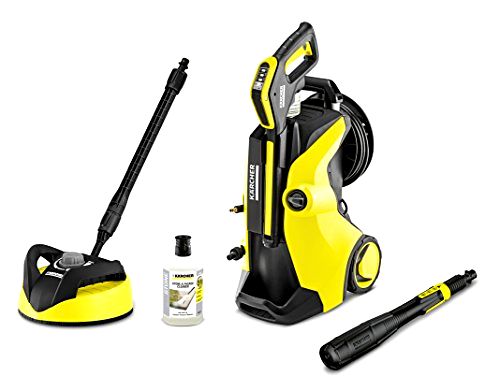
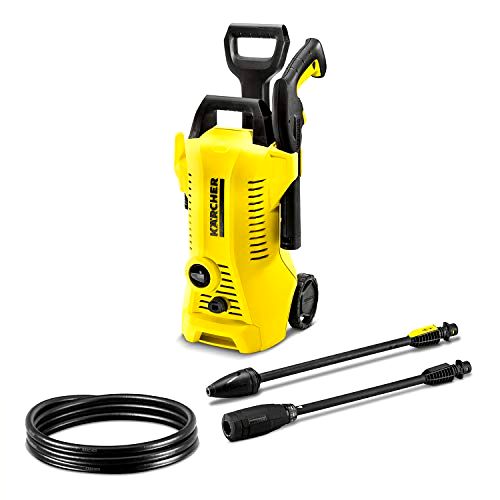
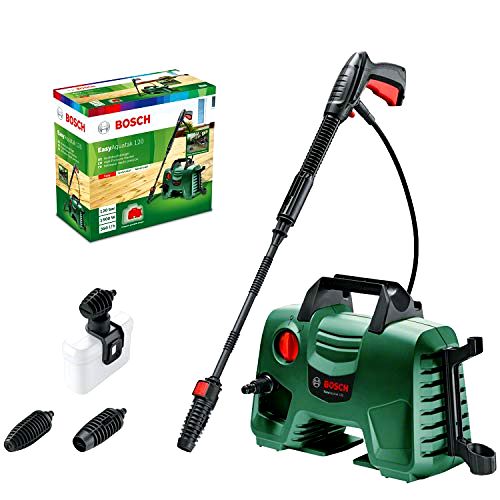
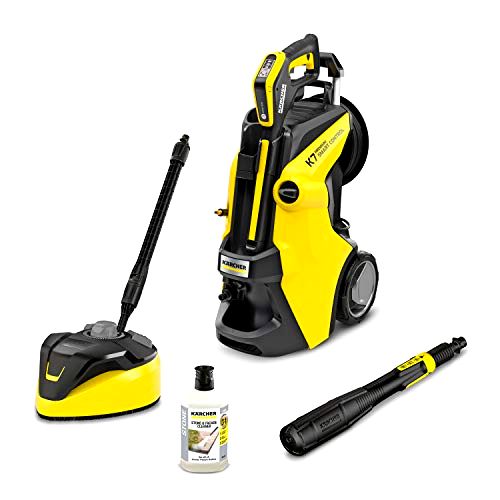
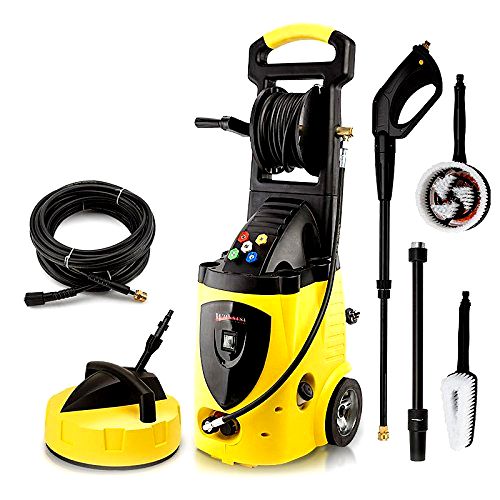
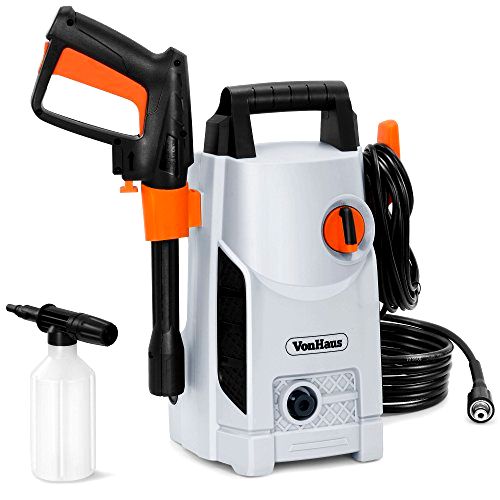

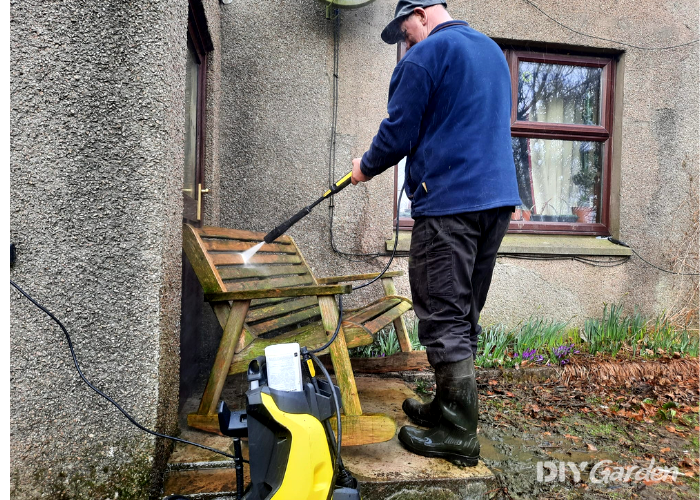
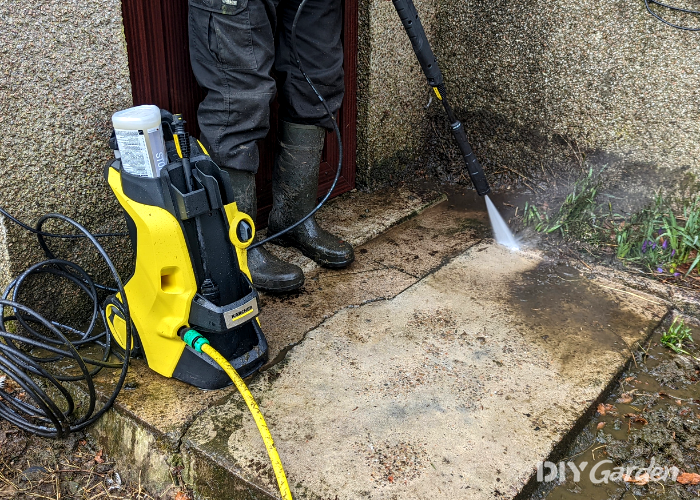
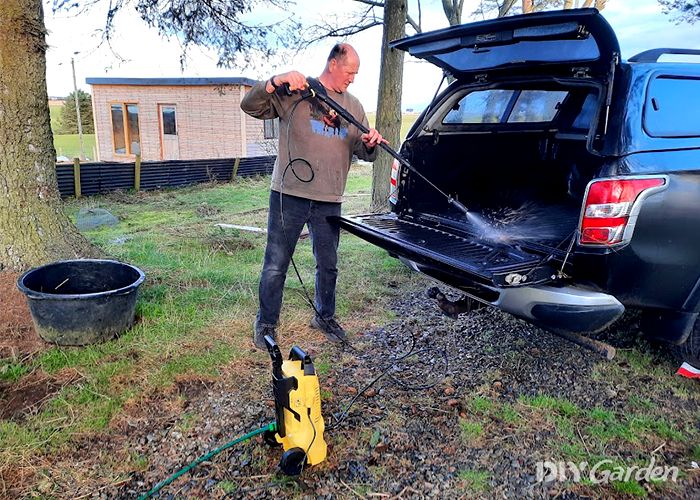
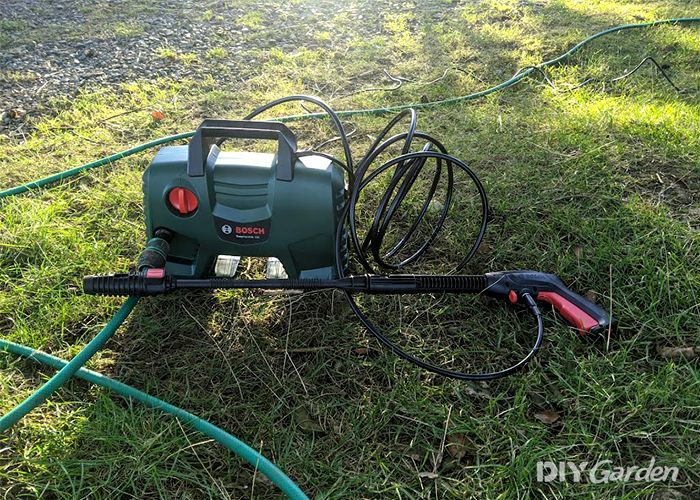
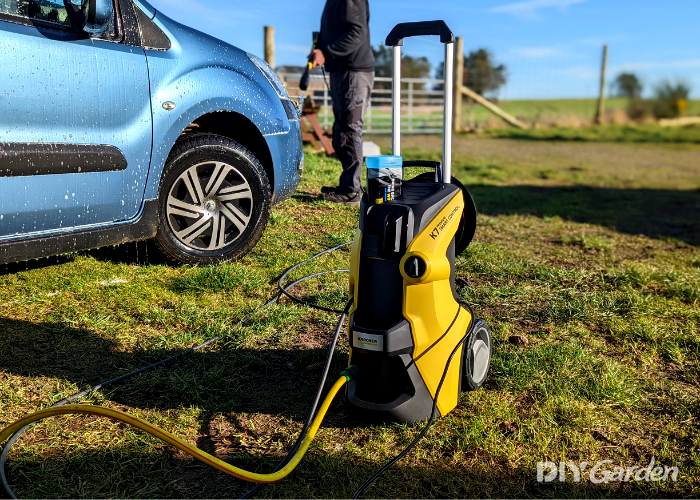
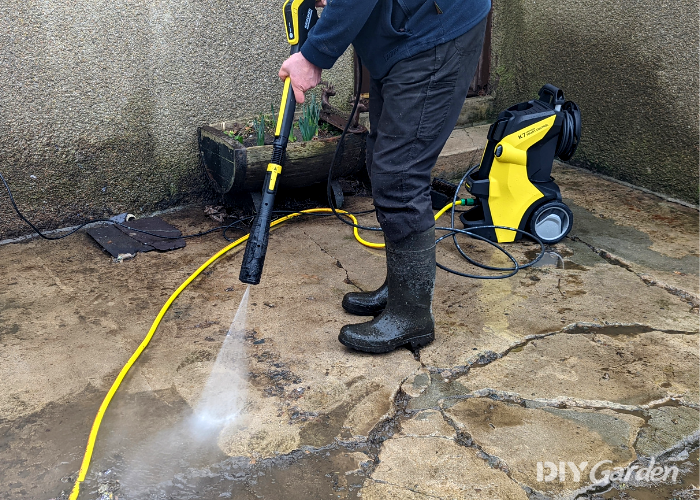
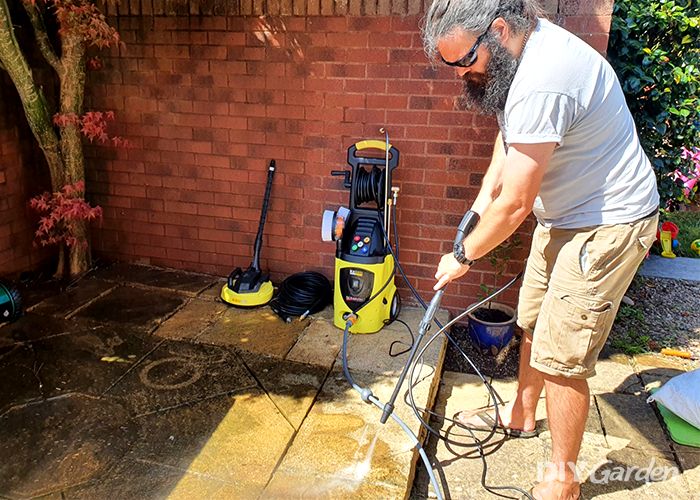
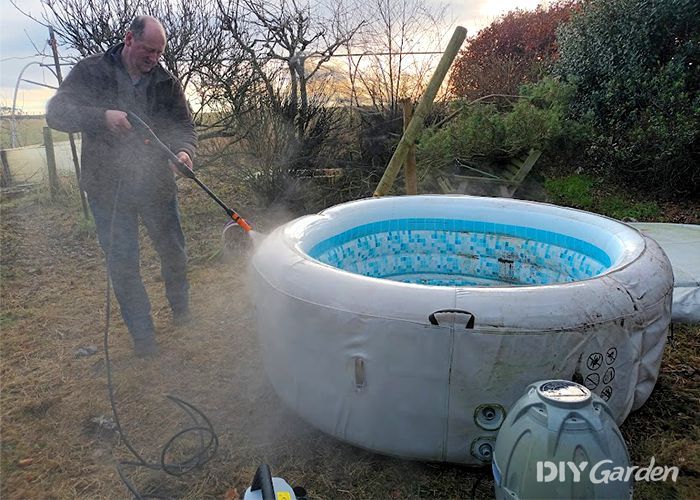
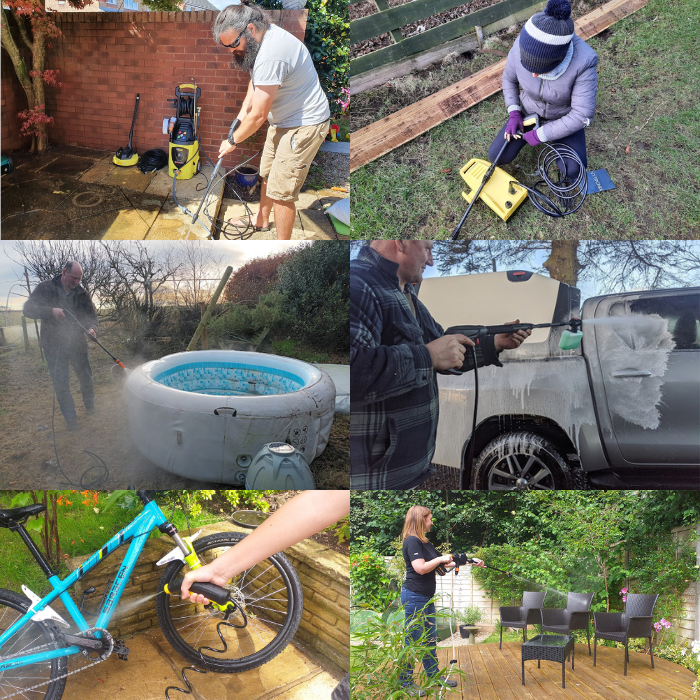
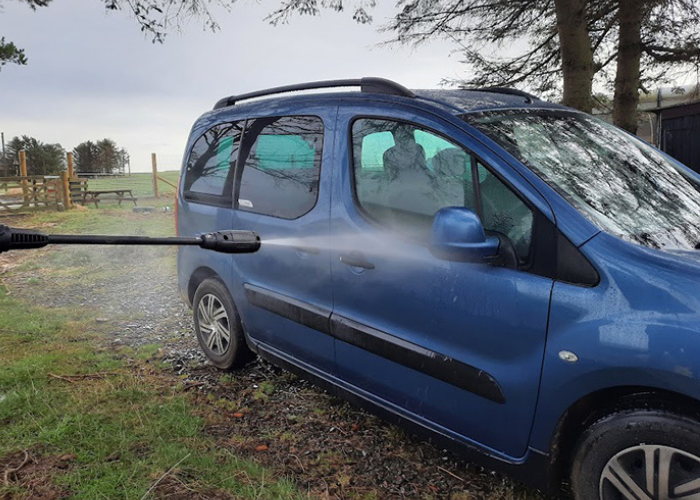
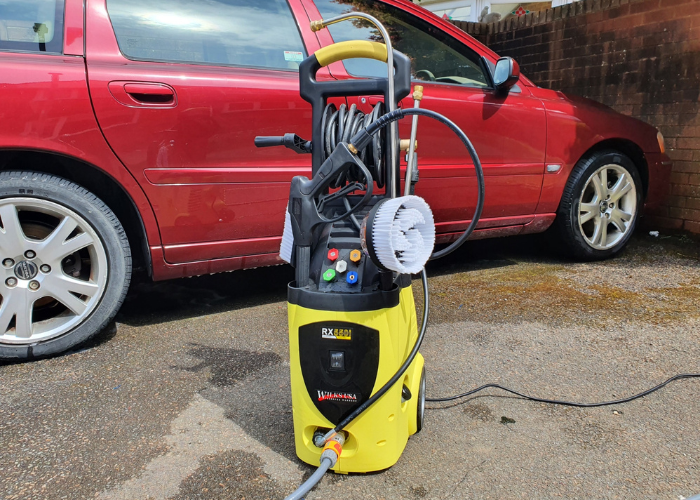
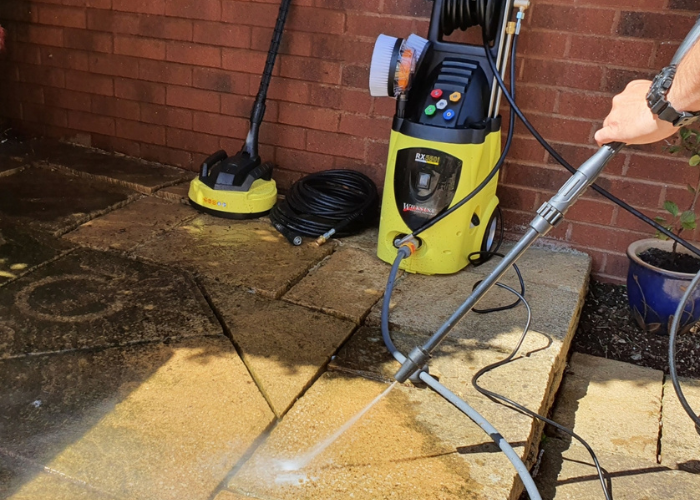
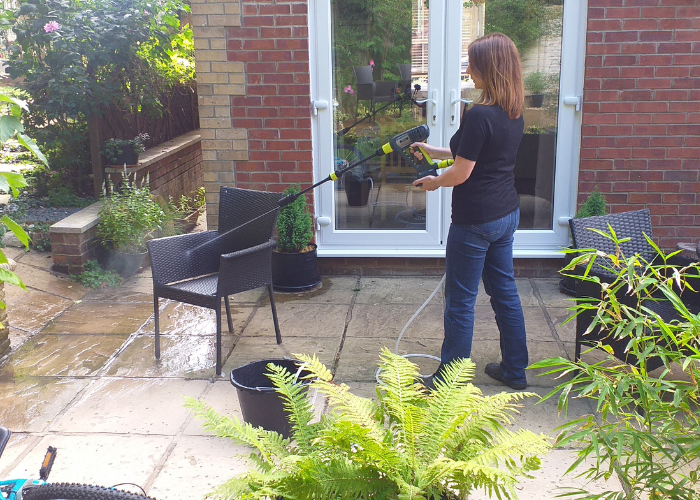

Share